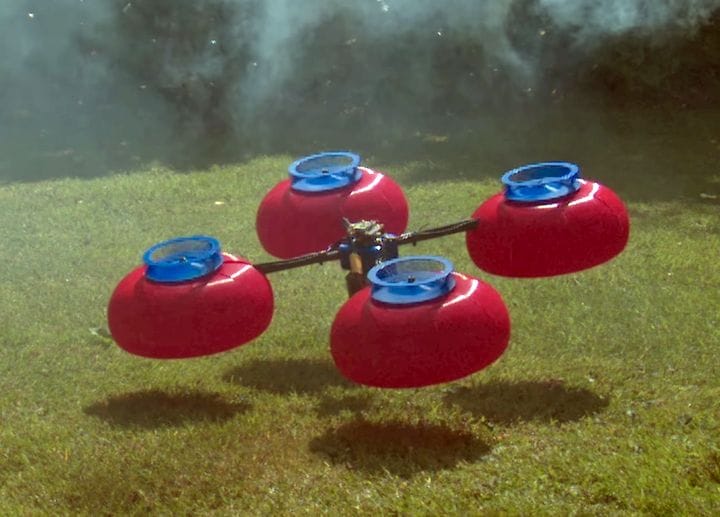![A 3D printed drone using the Coandă Effect [Source: YouTube]](https://fabbaloo.com/wp-content/uploads/2020/05/image-asset_img_5eb091a7e1eb1.jpg)
This week’s selection is the Coandă Effect Drone Propulsion experiments by aerospace engineer Tom Stanton.
Stanton is an engineer who likes to experiment, and has produced a number of YouTube videos of his experiments, including a gas thruster drone, super capacitor rocket, channel wing and much more. Most are aerospace or cycling-related, but all illustrate one interesting engineering concept or another.
Coandă Effect Definition
The experiment we’ve selected for this week is his most recent video, which experiments with the Coandă effect. According to Wikipedia:
“The Coandă effect is the tendency of a fluid jet to stay attached to a convex surface. It is named after Romanian inventor Henri Coandă, who described it as ‘the tendency of a jet of fluid emerging from an orifice to follow an adjacent flat or curved surface and to entrain fluid from the surroundings so that a region of lower pressure develops.’”
![Tom Stanton working on a 3D printed drone using the Coandă Effect [Source: YouTube]](https://fabbaloo.com/wp-content/uploads/2020/05/image-asset_img_5eb091a86aae4.jpg)
Stanton’s idea was to determine whether this aerodynamic principle could be used to construct a drone, as opposed to the standard propeller approach. To do so he devised a series of experiments with different shapes, impellers and propellors to identify the optimum design for the necessary components.
Of course, all of this experimentation involved repeatedly 3D printing different design iterations. Here’s the entire video:
Design Iteration With 3D Printing
![3D printed impeller designs for the Coandă Effect [Source: YouTube]](https://fabbaloo.com/wp-content/uploads/2020/05/image-asset_img_5eb091a8a33f9.jpg)
What impressed me about this video was that it was focused entirely on the drone aerodynamics aspects and the 3D printing element was simply a way to achieve the goal of testing different designs. It was a “normal” thing to do.
But not a few years ago it would most definitely NOT have been a normal thing to do. Today’s designers have unbelievable power at their disposal through the use of 3D printing and CAD software. Today, the combination of those two powerful technologies allows almost anyone to perform near-magical feats of design and making that would have been miraculous years ago.
To those equipped and trained with these technologies reading this post right now, I say: use your power wisely.
Coandă Effect Drone Experiment Results
Back to the Coandă Effect experiment: did it work? Was Stanton able to create a drone that used the Coandă Effect to fly efficiently and effectively?
No, it turns out the Coandă Effect is actually terrible for constructing flying drones. Stanton found a way to barely make a drone fly, but the power required was far more than conventional drone designs.
Thus, the Coandă Effect drone design was a failure, and yes, we picked it for our Design of the Week. We picked it because of Stanton’s design process, where 3D printing was strongly leveraged through iterative experiments. Identifying a failed approach is as important as finding one that works, and thus the Coandă Effect drone is a good design in my books.
Via YouTube











This week’s selection is a 3D printed Coronavirus!